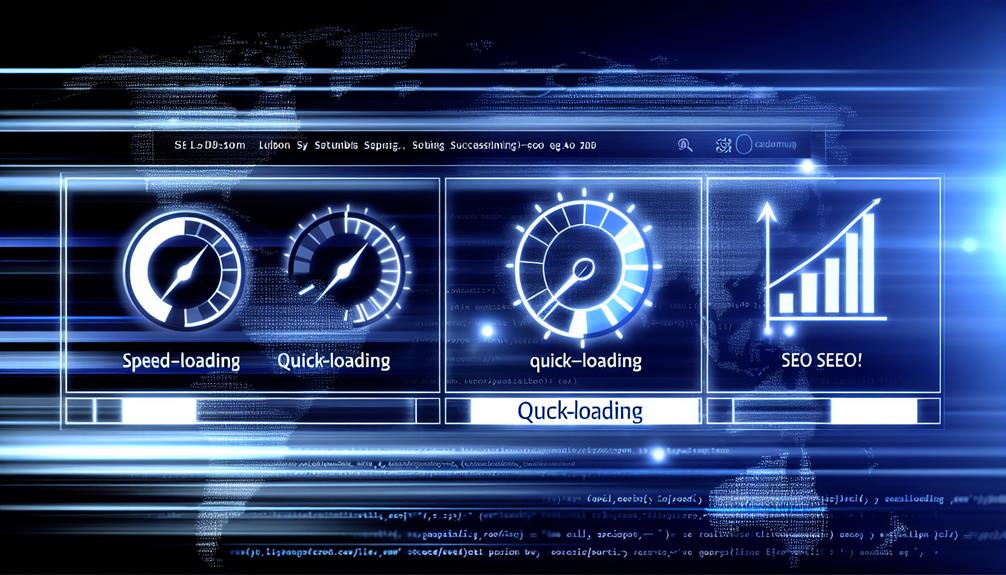


A website speed is crucial to improving your SEO ratings. When a website is fast, it provides a pleasant experience to the user, increasing satisfaction and retention. This lowers the bounce rate and makes visitors stay longer.
What's more, a fast website makes Google's job of crawling and indexing pages easier, improving visibility in search results.
Efficient performance also raises the essential metrics of Core Web VitalsThese improvements include Largest Contentful Paint (LCP) and First Input Delay (FID), which are vital for SEO. These improvements contribute significantly to the success of optimisation strategies search.
Learn more about how to optimise your site by focusing on important metrics.
Contents
Site speed is crucial to the user experience, directly affecting visitor satisfaction and retention.
When a page loads quickly, users tend to get more involved with the content, increasing engagement.
Research shows that most visitors abandon a website if it doesn't load within a few seconds.
Site speed also shapes the perception of efficiency and reliability.
Therefore, optimising loading times improves the user experience and can increase dwell time and conversion rates, essential factors for online success.
To reduce the bounce rate, it's crucial to adopt techniques that speed up website loading times and improve navigability.
Optimising the server is essential, as this increases the efficiency of the response time. Fast sites keep visitors engaged, reducing the likelihood of abandonment.
Investing in technologies that improve server performance and intuitive design strategies can transform the user experience.
These improvements not only reduce the bounce rate, but also increase the time spent on the site, increasing the effectiveness of SEO campaigns.
Improving website loading speed not only keeps visitors around, but also significantly increases your Google index.
Faster websites allow Google crawling more efficiently, making it possible for search engines index more pages in less time.
This efficiency is fundamental to strong indexing strategies, ensuring that new content is indexed quickly.
When Google can crawl and index your site quickly, it sees your site as trustworthy and up-to-date, positively impacting its SEO ratings.
A better index also leads to improved visibility in search results, making it easier for users to discover relevant content.
Therefore, optimising site speed is a crucial part of any strategy SEO The site's search engine rankings have a direct impact on how your site ranks in search engines.
Increasing the amount of time visitors spend on your site is crucial to improving your performance. user involvement and improve SEO.
A smooth browsing experience, characterised by fast and efficient page loads, can keep visitors engaged for longer.
When your website performs wellIn addition, they are more likely to explore additional content and interact with various elements, signalling to search engines that your site is valuable and relevant.
This can significantly improve your rankings.
What's more, a high-performance website reduces the rebound ratescreating a more satisfying user experience.
Optimising your site's performance is a key strategy for increasing user engagement and achieving better SEO results.
Understand how site speed impacts the user engagement naturally leads us to explore its role in Core Web VitalsThese are the crucial metrics that Google uses to evaluate the user experience.
Core Web Vitals focus on aspects such as loading performance, interactivity and visual stability, all of which directly influence the site's performance.
Effective web optimisation improves these metrics, creating a more seamless user journey.
For example, speeding up loading times can have a positive effect on Wider Content Painting (LCP), a vital metric.
Likewise, reducing interaction delays improves Entry Delay First (FID).
Optimising visual elements to prevent layout changes improves Cumulative Layout Shift (CLS).
Focussing on these metrics not only increases user satisfaction, but also raises the company's SEO ratings.
Site speed directly affects organic traffic, as it lowers the bounce rate and increases the conversion rate. Fast sites offer a superior user experience, which leads to greater engagement and better positions in search engines.
If you want to measure the speed of your site, there are some fantastic tools out there. PageSpeed Insights and GTmetrix are two that come highly recommended. Both offer detailed analyses, pointing out specific areas for improvement. By addressing these suggestions, you can significantly improve your site's performance and give your SEO rankings a real boost.
To boost your site's speed on mobile devices, focus on a few key areas. Firstly, make sure your site uses responsive design. This means that your site will perform and look good whether on smartphones, tablets or desktops. Next, optimise the images. Compressing and resizing them can significantly reduce loading times, making your site faster and more enjoyable for users.
The relationship between the speed of your website and its Search Engine Optimisation (SEO On-Page) is crucial. When your site loads quickly, it creates a smoother user experience, which keeps visitors for longer and encourages them to interact more. This increased user engagement directly influences your SEO rankings, making your site more visible and attractive to search engines.
Did you know that just a 1 second delay in loading a page can reduce conversions by a staggering 7%? Fast-loading sites not only keep visitors from bouncing, they also increase user interaction, making your content more relevant and boosting your SEO game.
